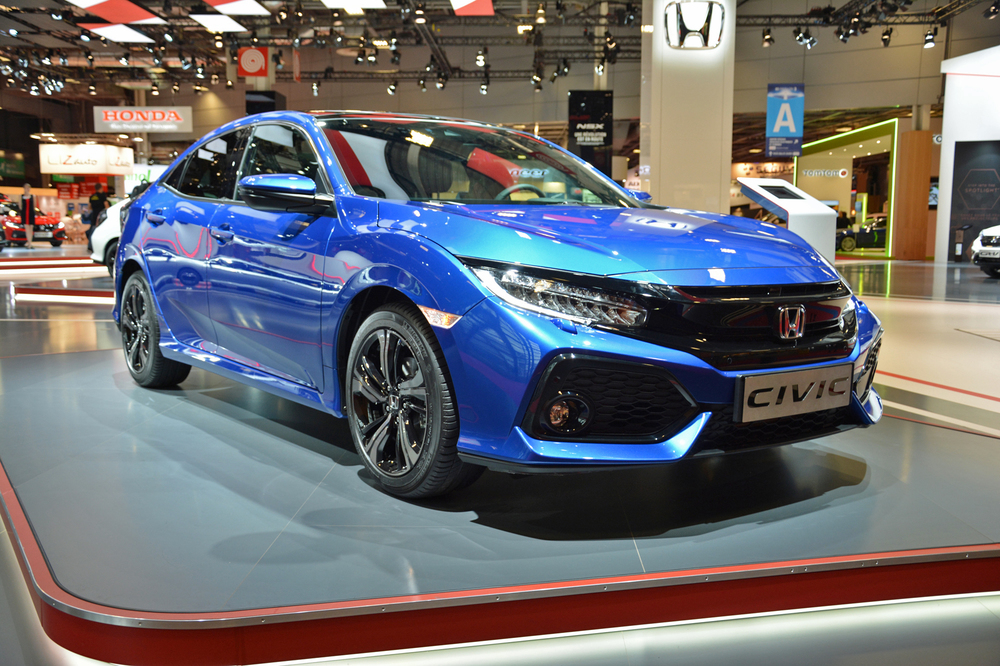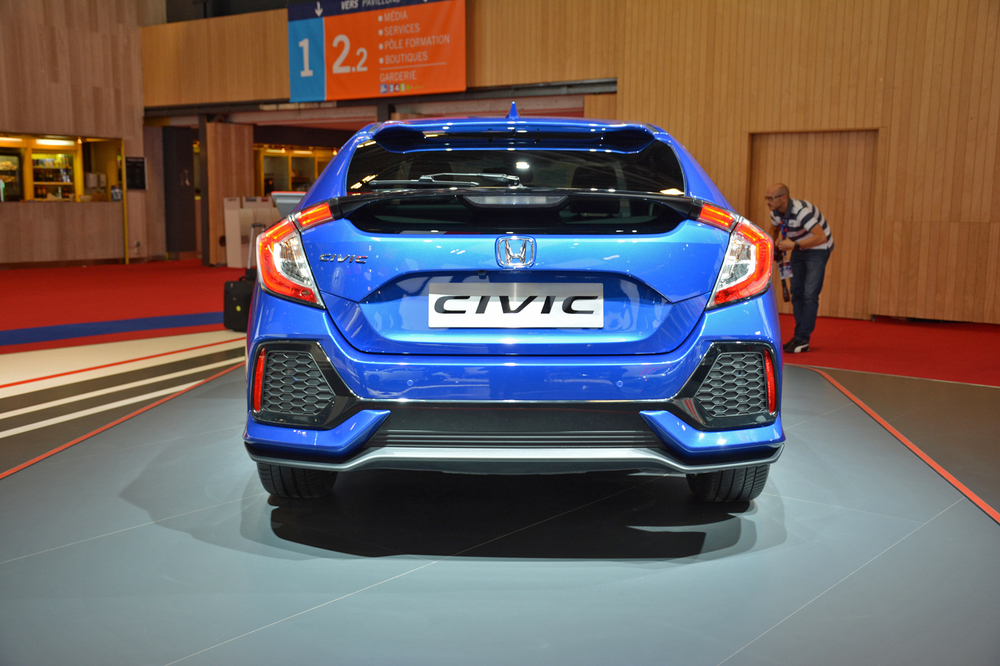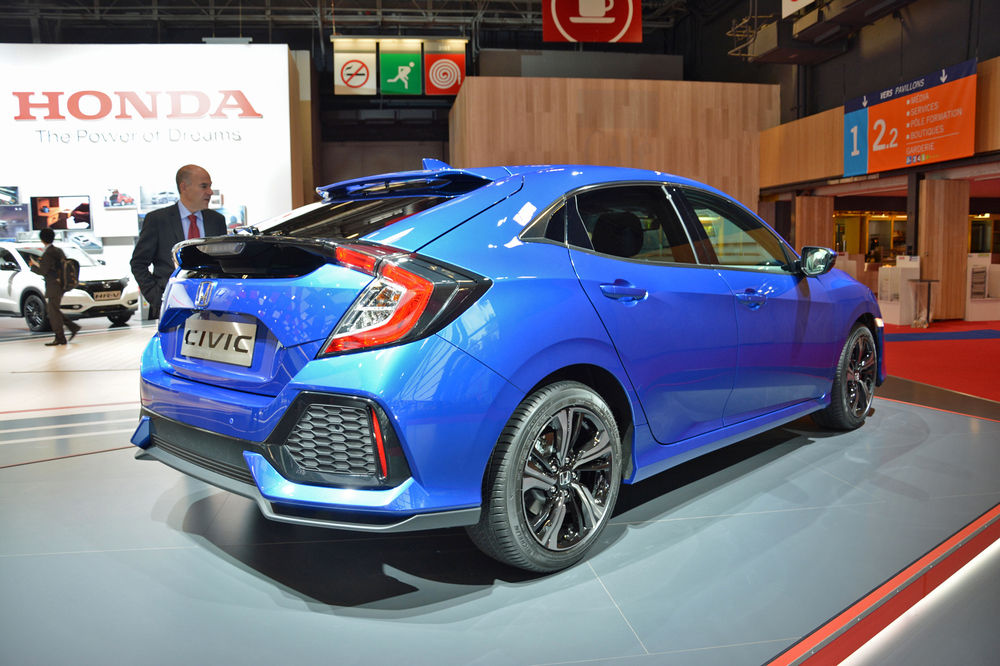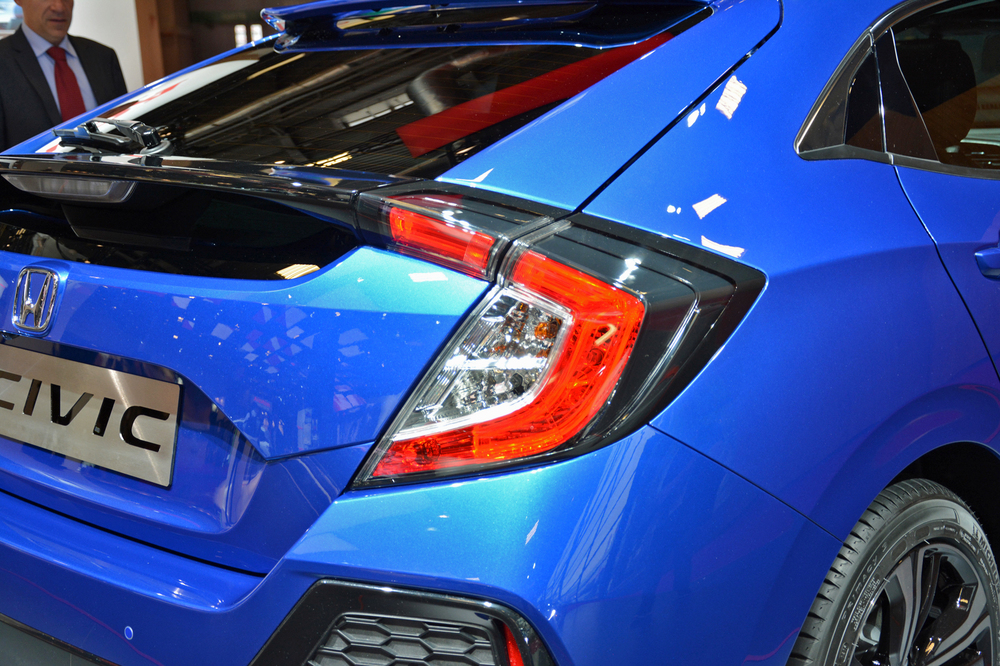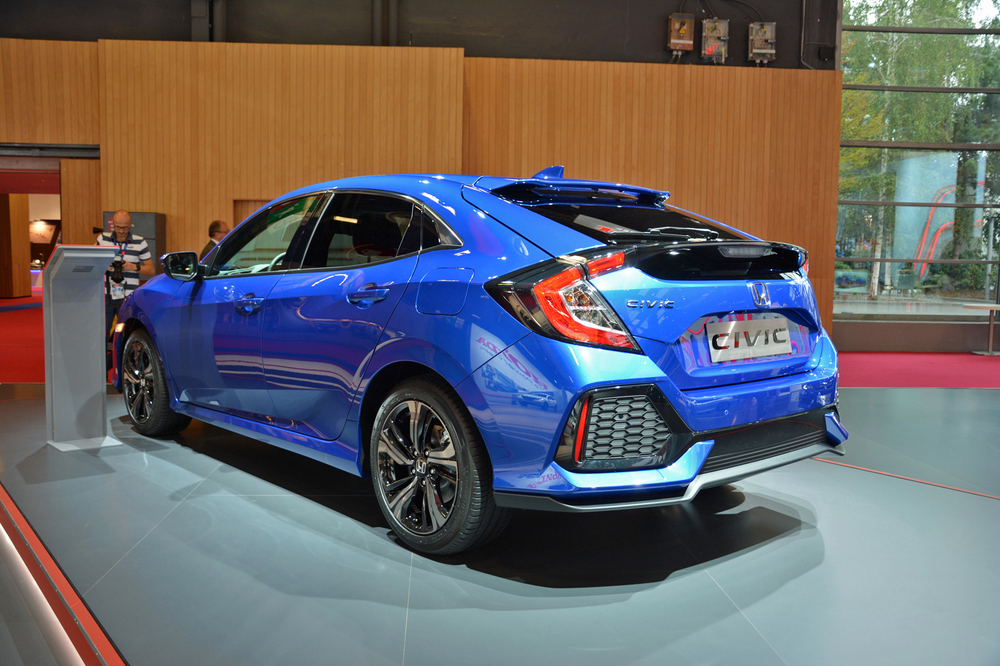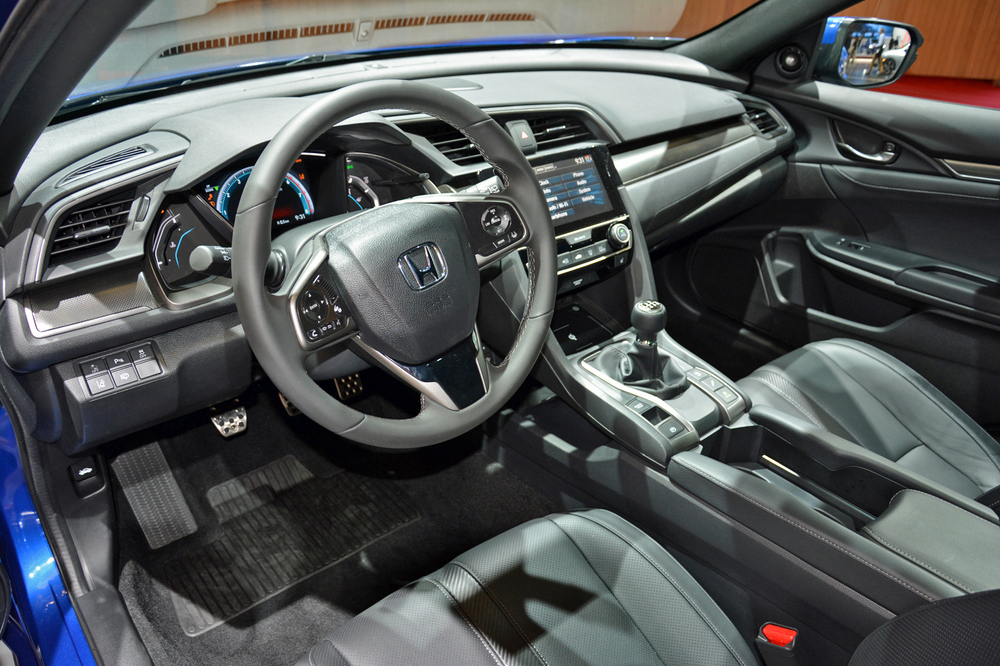Honda hasn’t sold a Civic hatchback in the United States since 2005 — but the five-door drought is nearly over.
On Monday, the 2017 Civic Hatchback will finally go on sale in the U.S. for a starting price of $19,700. For the money, you’ll get an entry-level LX model fitted with a 174-horsepower, 1.5-liter turbo engine and a six-speed manual gearbox, and that’s a combination enthusiasts have been anticipating for years. The asking price creeps up as you ascend the Civic Hatchback range, with Sport, EX, EX-L Navi, and Sport Touring trims adding features like dual exhaust, a continuously variable transmission, Apple CarPlay/Android Auto, heated seats, and more.
Honda hasn’t released pricing for the range-topping Sport Touring version just yet, but the EX-L Navi’s MSRP sits at a cool $25,300. For clarity, none of these costs include the $835 destination charge (for a full breakdown of pricing, click here).
The hatchback is the third member of Honda’s 10th-generation Civic family to be released, and it benefits from the same lightweight platform as the Coupe and Sedan. Unlike its siblings though, the five-door boasts 25.7 cubic feet of cargo capacity with the rear seats up. Not only is that significantly more than the standard Civic layouts, Honda says it’s the best in the vehicle’s competitive set.
The hatch is also interesting because of where it’s made. Unlike the other U.S.-bound Civic variants — which are built in Indiana and Ontario, Canada — the five-door will be assembled exclusively at Honda’s plant in Swindon, England, alongside cars for the European market. The car is on display in the metal for the first time at the 2016 Paris Motor Show.
Read more: Still as pragmatic as ever, Honda’s 2016 Civic Sedan piles on the creature comforts
Perhaps even more exciting than the Civic Hatchback is what will follow it. The vehicle will eventually spawn the next-generation Civic Type R at some point during its production run, and rumor has it the high-performance model will produce something on the order of 340 hp from its 2.0-liter, four-cylinder. So while the new hatch is certainly nice, clearly, the best is yet to come.
